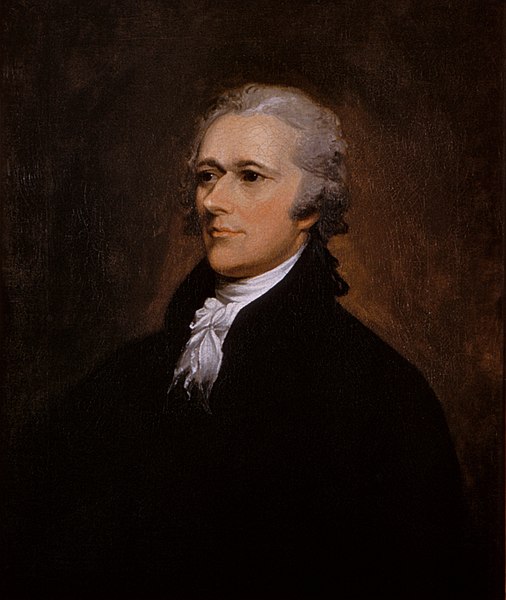As expected, Donald Trump has just commuted the sentence of Roger Stone, his longtime friend and political advisor. Apparently, according to the White House, children and teachers can risk their lives going to school during a pandemic, but prison is too medically risky for Mr. Stone, who was convicted on seven counts this year, including witness tampering and lying to investigators. He was sentenced this February to over three years in prison. This episode was yet another reminder of a seriously flawed justice system, one in which Trump seeks to throw those toppling statues of slavers in jail for ten years but will bail out his buddies. Stone certainly has company. He is one of seven Trump associates who have been found guilty of criminal acts since 2016; the others include Trump's former lawyer (Michael Cohen), former campaign advisor (George Papadopoulos), and Paul Manafort, his former campaign chairman. Manafort is a longtime partner and friend of Stone's and is interviewed in the Netflix documentary Get Me Roger Stone about this infamous politico.
Written and directed by Dylan Bank, Daniel DiMauro, and Morgan Pehme, Get Me Roger Stone does not offer an attempt at repackaging and redeeming a rightwing figure like another Netflix documentary called Mitt did only a few years before it. If you hate Roger Stone, your hatred of him will only be fanned. If you don't like the guy but find yourself frequently defending him to your progressive friends, seeing a documentary like this might only make you more uncomfortable. Nobody likes Roger Stone, so I don't need to go any further with a third category.
In the documentary, Stone describes himself as an "agent provocateur". Trump describes him as a "dirty trickster". Stone happily wears that badge, as he frequently does the Nixon pose, embracing this image of a counterpuncher who doesn't always follow the rules with tremendous glee. He dresses the part as well. Everyone has seen pictures of him in those ridiculous suits and a bowler hat and glasses that make him seem as if he's begging to be punched. The schmuck even drinks a martini while being interviewed here. All rightwing provocateurs like to think of themselves as Bond villains, but Stone doesn't make the grade. He's not a Bond villain, but more like a 1960s Batman villain, an agent of chaos more in the mold of Caesar Romero than Heath Ledger.
Written and directed by Dylan Bank, Daniel DiMauro, and Morgan Pehme, Get Me Roger Stone does not offer an attempt at repackaging and redeeming a rightwing figure like another Netflix documentary called Mitt did only a few years before it. If you hate Roger Stone, your hatred of him will only be fanned. If you don't like the guy but find yourself frequently defending him to your progressive friends, seeing a documentary like this might only make you more uncomfortable. Nobody likes Roger Stone, so I don't need to go any further with a third category.
In the documentary, Stone describes himself as an "agent provocateur". Trump describes him as a "dirty trickster". Stone happily wears that badge, as he frequently does the Nixon pose, embracing this image of a counterpuncher who doesn't always follow the rules with tremendous glee. He dresses the part as well. Everyone has seen pictures of him in those ridiculous suits and a bowler hat and glasses that make him seem as if he's begging to be punched. The schmuck even drinks a martini while being interviewed here. All rightwing provocateurs like to think of themselves as Bond villains, but Stone doesn't make the grade. He's not a Bond villain, but more like a 1960s Batman villain, an agent of chaos more in the mold of Caesar Romero than Heath Ledger.
Two years ago, Trump went to Twitter to hilariously cry that because he "won" on his first try (what adult talks like that?), he was not just smart, but a genius. But that's not true. I mean, obviously he's neither smart nor a genius. But aside from the fact that he lost the election by nearly three million votes, his first political adventure was in 2000, during Trump's efforts to be the nominee for President of the United States of the Reform Party (which surprisingly still exists). Trump sought the Reform nomination, and ironically argued the nominee shouldn't be Pat Buchanan because Buchanan was too racist. Who served as one of Trump's advisors? Roger F-ing Stone. Trump lost the race for the nomination, which Buchanan won. Stone then returned to Trump's inner political circle in the early days of his next campaign before he was fired (or before he quit, as he says). Stone is assumed to have recommended Manafort to be Trump's campaign advisor before he, too, quit (and now sits in prison, unable to get Trump's sympathy in a way Stone has).
Get Me Roger Stone progresses in a similar way to the renowned 2003 documentary The Fog of War, directed by Errol Morris. Like Morris, Bank, DiMauro, and Pehme get Stone to discuss his "rules" or lessons. There are so many rules he likes to dish out, but the only one you really need to understand is the first one he tells us: It is better to be infamous than not famous at all. He has an almost humorous way of finding himself in every sort of major U.S. political event, including both stolen elections of 2000 and 2016. He was a Nixon aid and was even discussed during the Watergate hearings. Regarding his Nixon fetish, he's a contrarian to be sure; no one likes Nixon, and nobody talks about him in positive ways. But Stone does, and the affection seems genuine. Stone has a tattoo on his back of Nixon's face, and his mother, according to the documentary, once told him that his religion is politics and his god is Richard Nixon. After Watergate, he became close with McCarthy's guy Roy Cohn (that Roy Cohn), who likely also served as a mentor to Stone in the dark arts of political fighting. (It was Cohn who introduced Stone to Donald Trump.) Along with Manafort, their partner Charlie Black, Lee Atwater, and later Trump, Stone championed the fight-dirty-but-win attitudes the Baby Boomer New Right has cursed us with.
Despite how rat-like he is, Stone comes across sometimes in a remarkably charming (yet insufferable) way. Among others interviewed in Get Me Roger Stone are Jeffrey Toobin, Tucker Carlson, and of course, Donald Trump. But they're all boring to listen to compared to Stone. He also makes surprisingly compelling arguments. "Hate," he tells the interviewer, "is a stronger motivation than love." Democrats learned that the hard way after their silliness about "when they go low, we go high" got them nowhere. Charismatic and knowledgable were not two adjectives I associated Roger Stone with before watching Get Me Roger Stone.
However, since the documentary was released, Stone has been different. The man is certainly not well. In his disposition from earlier this year, he sat like a rabid dog, aching to bite his peculiar teeth into the flesh of an opponent. By that I mean he literally chomped his teeth, as if they had a mind of their own and were willing to screw up his life even more than he already had. Any normal person who has had to witness an unhinged rightwing uncle ruin everyone's Thanksgiving with a rant about the so-called Deep State will surely recognize this when watching the clip. For a man who seems to revel in making everyone else angry, it is utter bliss to watch him so easily lose his shit.
The one small sliver of solace one can find in the saga of Roger Stone is a simple fact: By now, other than fringe alt-right figures who pose an undeniable threat to the United States and to civilization, no one likes or admires a person like Roger Stone, and surely no one will mourn when he finally leaves us. Even most of the people interviewed in the documentary don't heap praise on him. His daughter admits he's a trickster, and his wife tells us that when she met him, she thought he looked like a member of the Hitler Youth.
All of this nonsense has been normalized these past few years. "Now the children's table is the adult table," someone says in the documentary. How true that is. In 2015, at the first GOP debate, Trump was asked about all the money he had given to politicians before he himself became one. (Trump's money giving is addressed in Get Me Roger Stone, as well.) "When they call, I give," he said. "And you know what? When I need something from them, two years later, three years later, I call them. They are there for me." For a man who is a serial liar, that is a profoundly honest and accurate statement, one that would have likely cost him a generation or even a decade or two before. But these are different times, partly because of guys like Roger Stone. The documentary is successful at drawing lines between Nixon to Stone to Trump. Stone complains in the documentary about it all being "a swamp", the term Trump often uses to shift blame for not solving problems. It may be a swamp, but it's a swamp that celebrates Roger Stone as a founding member.
Despite how rat-like he is, Stone comes across sometimes in a remarkably charming (yet insufferable) way. Among others interviewed in Get Me Roger Stone are Jeffrey Toobin, Tucker Carlson, and of course, Donald Trump. But they're all boring to listen to compared to Stone. He also makes surprisingly compelling arguments. "Hate," he tells the interviewer, "is a stronger motivation than love." Democrats learned that the hard way after their silliness about "when they go low, we go high" got them nowhere. Charismatic and knowledgable were not two adjectives I associated Roger Stone with before watching Get Me Roger Stone.
However, since the documentary was released, Stone has been different. The man is certainly not well. In his disposition from earlier this year, he sat like a rabid dog, aching to bite his peculiar teeth into the flesh of an opponent. By that I mean he literally chomped his teeth, as if they had a mind of their own and were willing to screw up his life even more than he already had. Any normal person who has had to witness an unhinged rightwing uncle ruin everyone's Thanksgiving with a rant about the so-called Deep State will surely recognize this when watching the clip. For a man who seems to revel in making everyone else angry, it is utter bliss to watch him so easily lose his shit.
All of this nonsense has been normalized these past few years. "Now the children's table is the adult table," someone says in the documentary. How true that is. In 2015, at the first GOP debate, Trump was asked about all the money he had given to politicians before he himself became one. (Trump's money giving is addressed in Get Me Roger Stone, as well.) "When they call, I give," he said. "And you know what? When I need something from them, two years later, three years later, I call them. They are there for me." For a man who is a serial liar, that is a profoundly honest and accurate statement, one that would have likely cost him a generation or even a decade or two before. But these are different times, partly because of guys like Roger Stone. The documentary is successful at drawing lines between Nixon to Stone to Trump. Stone complains in the documentary about it all being "a swamp", the term Trump often uses to shift blame for not solving problems. It may be a swamp, but it's a swamp that celebrates Roger Stone as a founding member.













